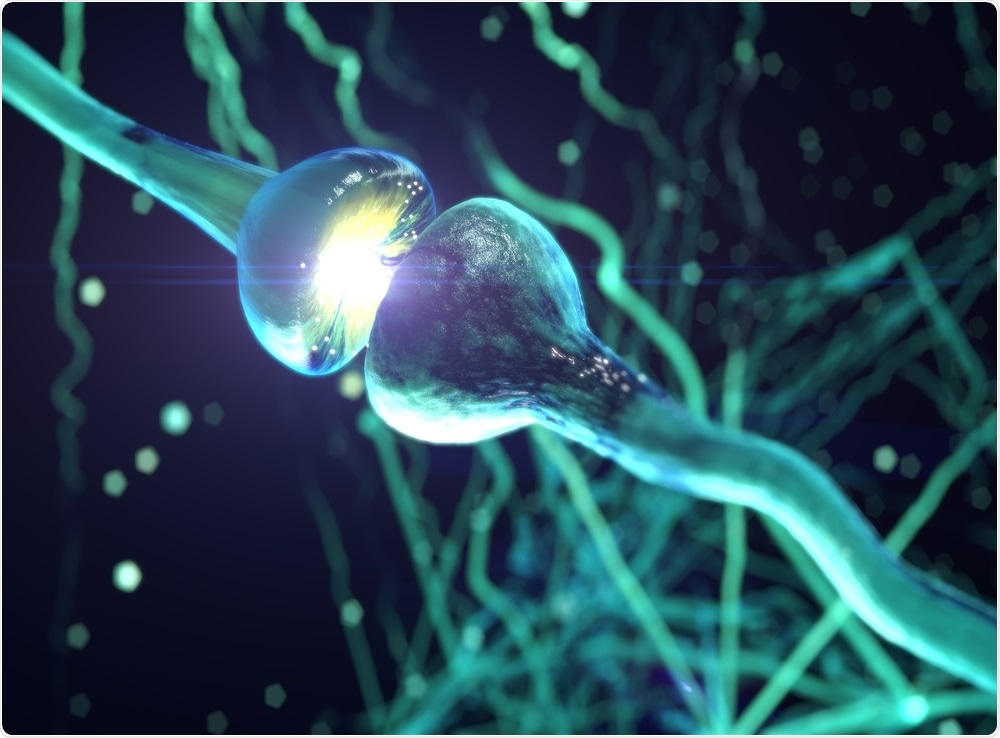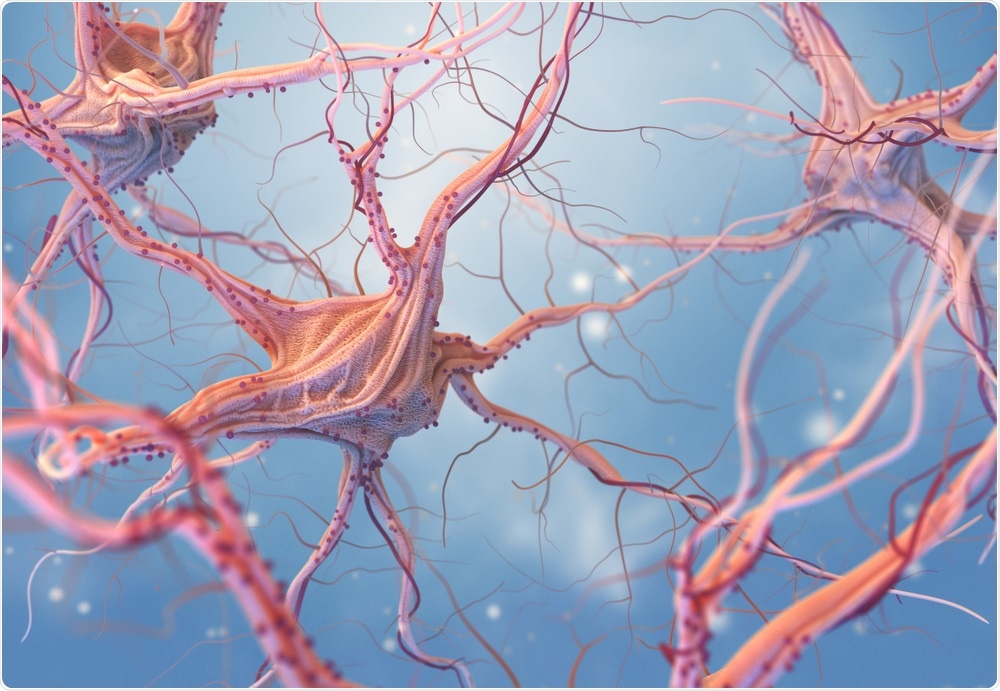News-Medical speaks to Martin Eysberg, who discusses the effects of monoamines such as dopamine on behavior and neurological disease and provides an introduction to the ALEXYS Neurotransmitter Analyzer, an extremely precise UHPLC-EC detector that is ideal for the study of neurotransmission over time.
How is microdialysis being used to further our understanding of neurotransmission?
Microdialysis is a sampling technique that is used to collect extracellular fluid from the brain. It is used to study a range of conditions, including Parkinson’s, Alzheimer’s, addiction, behavior in relation to fear, neuroactivity following the consumption of alcohol and so on.
 Anatomy Insider | Shutterstock
Anatomy Insider | Shutterstock
In biomedical research, microdialysis often carried out in combination with liquid chromatography to take direct measurements of analytes in the brain or to collect samples in small vials.
This set-up can be used to observe changes in the concentration of neurotransmitters following stimulation, or a trigger. For example, internal changes in neurotransmission and neurotransmitter concentration can be measured following the administration of alcohol to a subject.
Why is microdialysis often combined with HPLC for monoamine detection?
Microdialysis has become an invaluable tool that provides real-time information of neurotransmitter levels in vivo. Microdialysis samples are either collected and stored or analyzed immediately in an on-line configuration using UHPLC and electrochemical detection (ECD).
There are two main reasons why combining these technologies is necessary; the sensitivity of the technique and the small sample volume available. It is an analytical challenge to provide reproducible and accurate data as neurotransmitter levels are often below the nanomolar and sometimes even below picomolar concentration range, so sensitivity is essential. In addition, most microdialysis systems can only extract 1 µL sample per minute, so even if you sample over five to ten minutes, you are only able to obtain 5-10 µL of sample.
Electrochemical detectors, also known as trace analysis detectors, are therefore the obvious choice for this type of analysis. Other detectors, like MS or UV, which require larger sample volumes, are not suitable for this specific application.
What are the greatest challenges for scientists when detecting and analyzing neurotransmitters in vivo?
Neurotransmitter analysis comes with a couple of challenges; the first is the scientific direction. How can researchers get as much information as possible out of a small droplet of sample?
In vivo neurobiology is already limited by sample size, especially for researchers working with mice, and if you want to run high-frequency sampling to improve your time resolution, the samples become even smaller (down to 1 µL). Developing technologies that can analyze small samples without compromising sensitivity is a very big challenge.
The other difficulty is that most of the scientists working in neurology have educational backgrounds in biology. This means that a lot of scientists find it challenging to analyze small samples such as monoamines (e.g. dopamine) with high sensitivity.
 Tatiana Shepeleva | Shutterstock
Tatiana Shepeleva | Shutterstock
How does the ALEXYS Neurotransmitter Analyzer address these issues?
The ALEXYS analyzer combines the power of UHPLC with the sensitivity of electrochemical detection, making it the perfect tool for the detection of neurotransmitters.
With the ALEXYS, our goal was to make the life of the scientist easier. We wanted to tackle the lack of experience in the industry and make running these experiments simpler and more efficient. Measuring samples is one part, but scientists also need a robust, reliable method.
We developed this through the ALEXYS, and now constantly monitor what kind of tools are in the market to improve resolution, sample injection, and speed, whilst decreasing precious sample consumption.
Finally, the ALEXYS analyzer is installed by one of our scientists, who will spend five days in the lab carrying out installation and training. When we leave the laboratory, even the most inexperienced neuroscientist will have the knowledge to run their own samples for a specific application.
How can the ALEXYS Neurotransmitter Analyzer be used to study dopamine levels in relation to behavioral problems (e.g. addiction) and neurological disorders (e.g. Parkinson’s disease)?
The brain is a dynamic organ where the concentration of neurotransmitters can change rapidly after a trigger. It may, therefore, come as no surprise that researchers in this field want to collect as much data as possible over a very short period of time.
In the past, scientists were collecting 20 µL microdialysis samples, at high flow rates (2-3 µL/min), giving them 40-60 µL of a very dilute sample. This made it difficult to obtain sufficient time resolution (i.e. collect enough data points in a short period of time) and without this, you are unable to detect rapid fluctuations in neurotransmitter concentration.
That’s why we developed a system that could analyze very small sample volumes (e.g. 1.5 µL) obtained every 1.5 minutes, without compromising on sensitivity (roughly around 100 pM).
What other samples can the ALEXYS be used to study?
There are three main assays used for the analysis of neurotransmitters. The first assay is for monoamines and metabolites such as dopamine, norepinephrine, and serotonin.
Next, we have an assay for amino acids such as GABA and glutamate. This assay requires pre-column derivatization and a very selective UHPLC analysis to separate Glutamate, from GABA, in the same chromatogram.
Our final assay is for acetylcholine and choline and is carried out using an Immobilized Enzyme Reactor (IMER) reactor where you convert acetylcholine/choline into peroxide.
These are our three major groups. However, there are also scientists who are using our system for the detection of other chemicals, who add another detector. For instance, if a researcher needs to detect neuropeptides, they can use the same analyzer with a UV detector.
Where can readers find more information?
About Martin Eysberg
 Martin is the Director of Sales and Marketing for Antec Scientific, and focused the products/applications around the analytical needs of neuroscientists. He has particularly interested in behavioral changes such as addiction, and neurological disorders caused by defects in neurotransmission.
Martin is the Director of Sales and Marketing for Antec Scientific, and focused the products/applications around the analytical needs of neuroscientists. He has particularly interested in behavioral changes such as addiction, and neurological disorders caused by defects in neurotransmission.
Martin leads the development of the market for new products, and recently launched the ROXY EC, an electrochemistry system for mass spectrometry. The product line with the focus on simulation of natural redox reactions in line with MS.